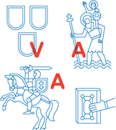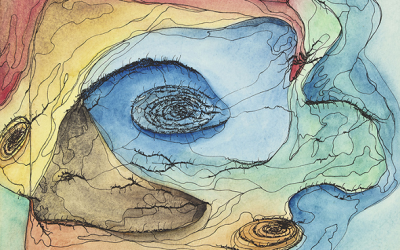24th May at 2 p.m. Aistė Kisarauskaitė, doctoral student in Fine Arts, will defend her art project "A Garden Phenomenon. Gardening as an Art Practice" (Fine Arts V 002) at the VAA exhibition halls “Titanikas” (Maironio str. 3, Vilnius).
The accompanying exhibition "Bona Sforca Says:" will run 14-29 May 2024 at the VAA exhibition halls "Titanikas" (Maironio g. 3, Vilnius).
The defence hearing will be held in Lithuanian.
Art project supervision:
Prof. dr. Žygimantas Augustinas (Vilnius Academy of Arts, Visual Arts, Fine Arts V 002)
Thesis supervision:
Dr. Erika Grigoravičienė (Lithuanian Culture Research Institute, Humanities, Art History and Theory H 003)
The Artistic Research Project will be defended at a public meeting of the Academic Board of Fine Arts at Vilnius Academy of Arts composed of the following members:
Chairperson:
Prof. Alvydas Lukys (Vilnius Academy of Arts, Visual Arts, Fine Arts V 002)
Members:
Dr. Mindaugas Gapševičius (Bauhaus-Universität Weimar (Germany), Visual Arts, Media Art)
Licentiate of Arts Aurelija Maknytė (Vilnius University, Visual Arts, Fine Arts V 002)
Prof. dr. Agnė Narušytė (Vilnius Academy of Arts, Humanities, Art History and Theory H 003)
Dr. Skaidra Trilupaitytė (Lithuanian Culture Research Institute, Humanities, Art History and Theory H 003)
Abstract
The fenced area (the vegetable garden) was chosen as a kind of creative space, a laboratory where the relationship between man and plant (vegetable) is non-conflicting, based on mutual concern - man tries to save the seeds of the plant, to water and propagate it, and the plant feeds man. The main intention of the creative project and the theoretical study is the emancipation of plants, ecofeminism and interspecies care practices. The study took the form of a braid of different gardening and creative experiences and theoretical explorations, weaving together, stimulating or denying each other and resulting in new knowledge. Art practice is understood as a definition of the co-creative process between man and plant, where new forms or varieties of plants are co-created by plant and man, earth, bacteria, the whole network that makes up the garden, where the artist creates works inspired by the process, reflecting on it, rethinking it, creating new knowledge and communicating it to the viewer. Once involved, it is difficult to understand who is the maker and who is being made, the collective body of the garden performing an annual act that reflects the change of the seasons. It was based on the theories of Donna Haraway and Bruno Latour, the work of architectural researchers, contemporary pop culture phenomena, Lithuanian folklore and its researchers, historical data, and it was all fed and stimulated by daily conversations with my daughter and plants that grow slower or faster.
The artistic study process is narrated by Bona Sforza D'Aragona, Grand Duchess of Lithuania and Queen of Poland (Bona Sforcza D'Aragona, 1494, Vigevano, Italy - 1557, Bari, Italy) . Her appearance as the main narrator in this text is due to her historically significant works for Lithuania, such as the introduction of new vegetables and herbs to Lithuania, the Wallach reform, and the relevance of these works to the topic of the study. Bona Sforza operates both in her own historical time and in the present, thus creating an absolutely fictional character. Queen Bona tells about the garden, where the plant and the person are connected by the threads of life - the process of watering, care, feeding, about the garden - the invisible but long-lasting centaur of man and plant.
____________
Credics: Aistė Kisarauskaitė, "Bona Sforca Says:", 2024 m.







